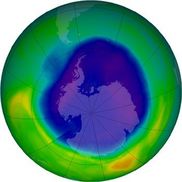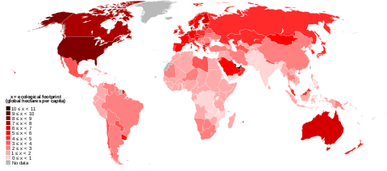the effects of our over-consuming
The continuous demand of goods and resources has taken a toll on the Earth’s environment. Multiple harmful resultants of the World’s over consuming have caused the environment to be impacted by causes such as disintegration of the Ozone Layer, gases accumulating in the food chain by biological magnification, deforestation, and contamination of water. First of all the Ozone Layer, due to the CFCs (Chlorofluorocarbon) present in aerosol cans and refrigerators have caused multiple holes to develop in the ozone. One example of this is in Australia. Australia is now being exposed to the harmful Ultraviolent Rays of the sun causing more skin cancer, and even more impactful effects on the plants and the animals. Many plants such as rice are very sensitive to the UV light and would be affected by the increase of them.
The effects of the world's consuming
On top of this, similar CFCs are aggregating into the food chain in biological magnification. Biological magnification is the concentration of toxins accumulating through the levels of a food chain. Scientists have discovered that the CFCs have not directly affected the food chain, but as they build up they have produced consequences in the top predators such as eagles and polar bears. Even more CFCs, POPs (persistent organic pollutants), pesticides such as DDT, and pollutants such as Sulphur Dioxide, Carbon Dioxide and Fossil Fuels have cause contamination of our water. Water is one of the most important resources that are needed for all aspects of life. Another bad effect on the Earth’s water and water cycle is due to the process of deforestation. Deforestation is the removal of trees or forests to either use the resources of the forest or to create a space that can be used for agricultural purposes or commercial reasons all due to our excessive consumer demands. Deforestation not only is taking away animals habitats but it is causing the certain area of deforestation to have a change in their water cycle. In many instances in the Rain Forest particularly areas affected by deforestations have changed from a biome of tropic rain forest to desert because of this lack of rain due to missing trees. http://www.globalissues.org/article/216/effects-of-over-consumption-and-increasing-populations
how each country contributes to our over-consuming?
All of these problems affect places all over the world, but are especially due to the United State’s large consuming problem. When comparing the United States consumption patterns to the rest of the world and places such as Europe, the United States clearly consumes the most. In a basic study comparing the amounts of Carbon Dioxide produced from heating, lighting, water, air conditioning, and refrigeration from each household, the United States produced 59 tons per household per year where as the rest of the world merely consumed 9.5 tons. (see how this breaks down) This means the United States is accountable for over 6 times as much Carbon Dioxide as the rest of the world is. All of this Carbon Dioxide contributes to the growing problems of global warming and greenhouse gases. In Europe for example the country only emits around 8.1 tons of Carbon Dioxide per year. In addition to this the average Americans uses around 12 MWh per year per person opposed to Europe where the only use 6.2MWh per year. Clearly the United States over uses many of the worlds resources. In addition to this, food is another factor. In the United States 356 billion pounds of food are consumed per year. The US average person has about 101.9 KilCalories per day compared to most of Europe having about 87.91 KiloCalories per day. In many underdeveloped places such as Africa people are down to eating almost 20-50 KiloCalories per day. Some of the worst examples of American consumers are their waste. Americans waste about 27% of the food available for consumption which is 96.4 billion pounds. These statistics just go to show how the United States excessive consuming that is greatly affecting the World’s environment is being wasted. According the “Global Ecofootprint (see the footprint) an average American would need 7.1 planets to all live as we do. By simple ways such as buying less manufactured goods, wasting less, and preserving as much energy as one can the World can work to protect the environment and fix what our overconsumption has already done.


